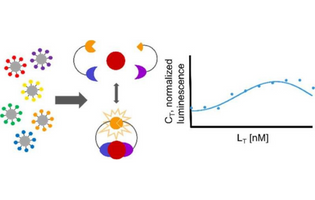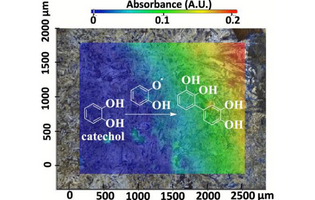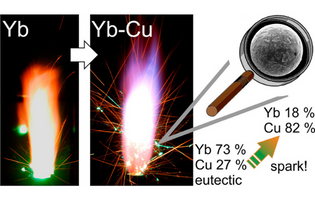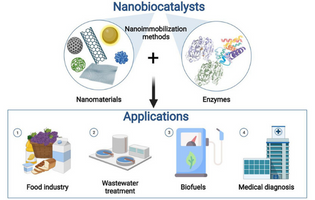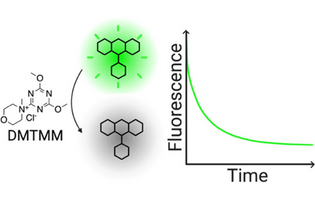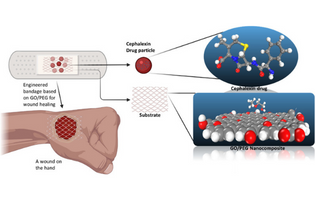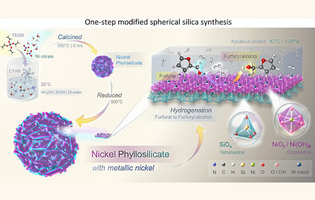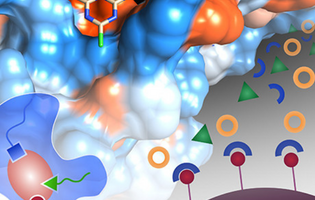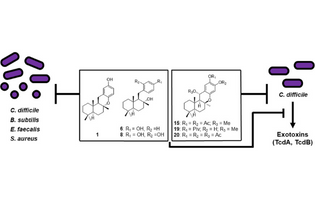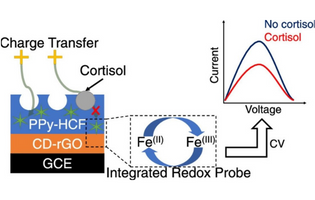What's New
We are excited to announce that ACS Omega is one of 12 ACS journals represented in the latest joint Virtual Issue entitled "Diagnostic and Therapeutic Radiopharmaceuticals". This Virtual Issue showcases the application of radiopharmaceuticals as diagnostic tools and therapeutic drugs across a range of research areas covered by various ACS journals.
We are very proud to announce that our Associate Editor, Professor Esra Çapanoğlu, has recently been named as one of the winners of this year's Georg Forster Research Award. The prize is awarded by the Alexander von Humboldt Foundation to leading international researchers from emerging and developing countries and honors their overall achievements to date. The ceremony will take place in Germany in early 2023 where Prof. Çapanoğlu will be hosted by Prof. Dr. Tuba Esatbeyoglu from the Institute of Food Science and Human Nutrition at the University of Hannover. Many congratulations, Esra!
Image: Prof. Dr. Tuba Esatbeyoglu and Prof. Dr. Esra Capanoglu Guven in Ortaköy, Istanbul in May 2022 for the kick-off meeting of their DAAD project.
ACS Omega - In The News
Cells are constantly making decisions that lead to differentiation. For instance, cells in an embryo make a series of decisions that determine whether they will become neurons in some cases and muscle cells in others. How do cells make these decisions? Researchers at Texas A&M University and North Carolina State University are determining how cells facilitate decision-making processes. Through this work, they hope to precisely measure the concentrations of specific vital signaling proteins within cell tissues. In addition, they will use the measurements to develop mathematical models that can predict and control cellular differentiation.
Read more here.
Reference: Gregory T. Reeves*, Balaji M. Rao*, et al. Experimental and Analytical Framework for “Mix-and-Read” Assays Based on Split Luciferase, ACS Omega (2022), DOI: 10.1021/acsomega.2c02319
Tiny aerosol particles that are suspended in the air can absorb and scatter sunlight radiation and contribute to create clouds affecting climate, reduce the visibility over cities and affect air traffic, and lower air quality. Aerosols in large pollution plumes, called brown clouds, can be transported long distances by the wind and reach other continents from the originating one. The variable composition of particles in brown clouds includes an unhealthy mix of organic molecules and ozone found in smoke. Researchers at the University of Kentucky reveal how ozone can transform the organic molecules during surface reactions taking place in such smoke plumes.
Read more here.
Reference: Marcelo I. Guzman* et al. Interfacial Oxidative Oligomerization of Catechol, ACS Omega (2022)
Sparklers can be a lot of fun—glimmering, fizzing and spitting out arcs of light from handheld sticks or tubes on the ground. But the metals that they're usually made with limit what the sparks can look like. Now, researchers at Clausthal University of Technology and the Fraunhofer Heinrich Hertz Institute report that rare-earth metals in alloy powders can produce flashes that shift from golden to green and continuously branch.
Read more here.
Reference: Eric G. Hübner* et al. Customizing the Appearance of Sparks with Binary Metal Alloys, ACS Omega (2022), DOI: 10.1021/acsomega.2c03081
Key Journal Metrics
- ACS Omega published 367 articles in September, for a total of 3,222 YTD. As compared to the equivalent timeframe in 2021, this represents a 31.4% increase in published output.
- Articles published by ACS Omega were downloaded 791,232 times in September, which represents a 29.8% increase in usage compared to the equivalent time period in 2021.
Published Issues
pp. 30657-31620
pp. 31621-32828
pp. 32829-33636
pp. 33637-34709
Featured Articles
The remarkable biotechnological potential of nanobiocatalysts and nanosensors has generated applied research and use in different areas such as biofuels, medical diagnosis, medical therapies, environmental bioremediation, and the food industry. In this Review, the authors present the different manufacturing strategies of nanomaterials with various advantages in biocatalysis and nanosensing of various compounds in the industry, providing great benefits to society and the environment.
Damià Barceló*, Roberto Parra-Saldívar*, Hafiz M.N. Iqbal* et al. Tecnologico de Monterrey, Mexico and Institute of Environmental Assessment and Water Research, Spain
ACS Omega 2022, 7, 37, 32863–32876
One of the most prevalent methods for fluorophore attachment is through the formation of amide bonds, which are often facilitated by coupling agents to activate carboxylic acid moieties for subsequent nucleophilic attack by amines. 4-(4,6-Dimethoxy-1,3,5-triazin-2-yl)-4-methyl-morpholinium chloride (DMTMM) is among the most popular of these coupling agents for bioconjugation due to its ability to facilitate amide bond formation in water. After observing quenching of 5-fluoresceinamine (5-FAM)-conjugated oligonucleotides in the presence of DMTMM, the authors sought to evaluate the magnitude and scope of this challenge by surveying the effect of DMTMM on a range of fluorescent dyes.
Jennifer M. Heemstra* et al. Emory University, Washington University in St. Louis, and Hanover College, United States
ACS Omega 2022, 7, 37, 33046–33053
In this Article, Density Functional Theory (DFT) simulations are used to evaluate the possible use of a graphene oxide-based poly(ethylene glycol) (GO/PEG) nanocomposite as a drug delivery substrate for cephalexin (CEX), an antibiotic drug employed to treat wound infection. The solubility of the suggested drug in the aqueous media around the open wound is shown by the magnitude of the predicted solvation energy. The findings from this study theoretically validate the potential use of a GO/PEG nanocomposite for wound treatment application as a drug carrier for sustained release of the CEX drug.
Suprakas Sinha Ray* et al. Council for Scientific and Industrial Research and Tshwane University of Technology, South Africa
ACS Omega 2022, 7, 38, 33808–33820
Enhancing the catalytic performance of non-noble Ni catalysts in the selective hydrogenation of furfural to furfuryl alcohol (FA) in terms of furfural conversion, selectivity, and good recyclability is challenging. Here, spherical nickel phyllosilicate catalysts (Ni_PS) with fibrous-like structures are prepared via a modified sol–gel method with Ni loadings of 2–30 wt %. Upon exposure to air, all the reduced Ni_PS catalysts exhibit more than 80% Ni0/Niphyllosilicate species on the surface, whereas a large portion of Ni oxide species (>55%) is presented on the impregnated catalyst. The Ni2+ species in nickel phyllosilicate catalysts are active and highly stable during reduction, reaction, and regeneration, yielding stable catalytic performance for multiple recycle tests in furfural hydrogenation to FA.
Christopher W. Jones*, Joongjai Panpranot* et al. Georgia Institute of Technology, United States, UCSI University, Malaysia, and Chulalongkorn University and Silpakorn University, Thailand
ACS Omega 2022 (ASAP)
Biomimetics applies to nature and aims to develop nanodevices, processes, and nanomaterials. Today, biomimetics provides a design approach to the biomimetic affinity ligands with the aid of computational methods, rational design, and other approaches to meet the requirements of the bioligands and improve the downstream process. This review highlights the recent trends in designing biomimetic affinity ligands and summarized their binding interactions with the target molecules with computational approaches.
Inspirations of Biomimetic Affinity Ligands: A Review
Adil Denizli* et al. Hacettepe University and Aksaray University, Turkey
ACS Omega 2022, 7, 37, 32897–32907
Patients receiving healthcare are at higher risk of acquiring healthcare-associated infections, which cause a significant number of illnesses and deaths. Most pathogens responsible for these infections are highly resistant to multiple antibiotics, prompting the need for discovery of new therapeutics to combat these evolved threats. The authors synthesized structural derivatives of (+)-puupehenone, a marine natural product, and observed growth inhibition of several clinically relevant Gram-positive bacteria, particularly Clostridioides difficile. The findings showcase a promising class of compounds for potential drug development against Gram-positive pathogens, such as C. difficile.
Steven J. Sucheck*, William T. Self* et al. University of Toledo and University of Central Florida, United States
ACS Omega 2022, 7, 37, 33511–33517
In this Article, the authors investigate the biosensor application of molecularly imprinted polypyrrole (PPy) doped with hexacyanoferrate (HCF) and coupled to reduced graphene oxide functionalized with β-cyclodextrin (β-CD). The sensor was shown to be specific toward cortisol in reference to salivary cortisol concentration in saliva over structural analogues and was shown to determine cortisol in artificial saliva at normal and elevated levels. The good performance and facile electrochemical fabrication of this antibody- and external label-free interface are promising for the development of affordable point-of-care biosensors.
Toshiya Sakata* et al. The University of Tokyo, Japan
ACS Omega 2022, 7, 37, 33491–33499
Previous Newsletters
Click below to view a previous ACS Omega Monthly Update:
© 2024 American Chemical Society, 1155 16th St NW, Washington, DC 20036, USA. View our Privacy Policy





